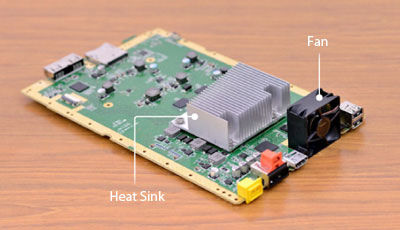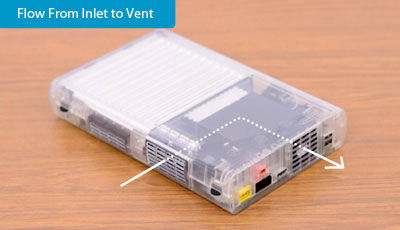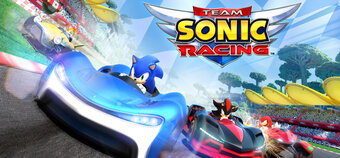When a shiny new console rolls into the shops, the first thoughts that pop into your head are usually a) when can I have it, b) how many games can I buy, c) how am I ever going to afford this (in that order). But rarely do you ever think about the work that's gone into actually putting the console together, from designing the circuit board, to choosing the processor and graphics card, to the obligatory stress tests, where you run a program that pushes the hardware to its absolute limits, and make sure the console can take pretty much anything you throw at it.

Motherboard, what do you think you're doing!? You're not going out dressed like that! Put something on this minute!
In a rare display of transparency, though, Nintendo have today published a new Iwata Asks, a regular series of interviews with key Nintendo staff, conducted by head honcho Iwata himself, with this month's topic being the development of the Wii U - specifically, how it all went together. Even if you're not the most technically minded of people, it still makes for an interesting enough read, as the various key figures in the Wii U's development talk about some of the decisions they've had to make with the console - and every key, technical term is handily defined, to make following that little bit easier.

That's better.
So, what are the most important things we can take away? Well, in order to save heat and energy, the Wii U will have a chip that combines a processor and graphics card into a single die. Along with saving a lot of space - essential when you've got a console as dinky as the Wii U, the decision also makes the console a lot easier to cool, helping the console stay quiet, and efficient. As the various internal pictures show, the console appears to be cooled by a single fan, meaning it should be ultra quiet (and a world away from our Xbox 360s). Nintendo have apparently spent a long time testing various cooling configurations to find the most efficient, testing different vents, fan speeds, numbers of fans, and even cutting holes in different places to see which helps the air flow the best - in fact, so thorough has the experimentation been, that they've tried over 2000 different variations! With the console apparently kicking out three times as much heat as the Wii, thanks to the high tech components inside, keeping things running coolly is critical, as if any component overheats, it could wreck the entire system, leading to a lengthy repair, and a lot of unhappy customers.

The final airflow design, taking air in, and pushing it out. Simple, but efficient.
Other changes made to the hardware as compared to the Wii include the decision to feature the sync button on the front of the console (many people struggled to find the one on the Wii, which was located under the front flap), while there are now USB ports around the front, as well as at the back, to make connecting peripherals that little bit easier. The last, and arguably least interesting revelation is that the console will come packaged with an HDMI cable, to help people enjoy the high definition graphics from the off. As Iwata cheekily notes, "Not many devices out there come with an HDMI cable yet.", a cheeky dig at Sony, and Microsoft, both of who's consoles (somewhat inexplicably) come without the essential lead.
And so, having published a series of revealing photos of a much more interesting variety than the ones French magazines splash thousands of pounds on, Nintendo have taken yet another baby step on the road to the Wii U's launch. We've seen glimpses of the launch games, the vast majority of which we want, we've seen the tablet-like controller, and how it'll make games that much more intuitive to play, and now, we've learnt how the hardware was developed, and the amount of effort that's gone into making sure everything works just right. As the weeks tick down towards the console's November launch, we're expecting details of the real, juicy stuff (like details of the online system, a look at the Nintendo Network accounts, a proper list of launch games, any news about the eShop - we still have plenty of questions) to start coming out of the woodwork any time soon, like a drip feed of awesome information. We'll be keeping our ears to the ground. Although that may make writing a bit tricky.













